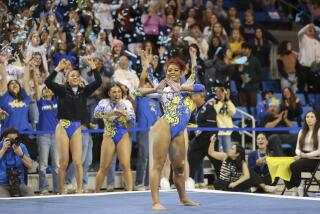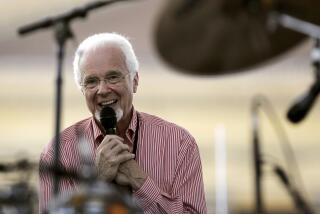Eric Reed Displays Virtuosity on Familiar Ground
- Share via
Pianist Eric Reed’s performance in Zipper Hall at the Colburn School of Performing Arts on Sunday afternoon was a homecoming of sorts, since it was at the downtown institution that his considerable talents first began to surface in the early ‘80s.
And to say those talents continued to emerge quickly is a considerable understatement. Before he had reached his 20th birthday, Reed already had performed locally with such heavyweights as Gerald Wilson, Teddy Edwards and John Clayton. He became a member of Wynton Marsalis’ Septet around the time he moved out of his teens in 1990, served a stretch with the Lincoln Center Jazz Orchestra in the mid-’90s and during the last decade has worked with virtually every major name in jazz. And he won’t turn 30 until June.
The program Reed presented at Zipper was a display of skill and versatility that thoroughly explained why he has been such an in-demand pianist and composer.
The first half was devoted to a series of settings using classical themes as the foundation for jazz improvisations. The selections ranged from Beethoven and Chopin to Poulenc and Sibelius, and were performed by a trio that also included bassist Robert Hurst and Jeff Hamilton, and a quintet that added saxophonists Jeff Clayton and Bennie Maupin.
Finding common ground between jazz and classical can pose problems, depending upon the degree to which the improvised passages rely upon the works’ explicit harmonic schemes. In this case, it worked better with some than others. Beethoven’s E Major Piano Sonata, for example, didn’t offer much in the way of harmonic challenge, and Sibelius’ “Valse Triste,” in a setting by Wayne Shorter, didn’t quite adapt to improvisation as well as its compelling melody might suggest.
*
The Chopin works, perhaps predictably, fared better. The Prelude in E minor has already served as the inspiration for Antonio Carlos Jobim’s “Insensatez”, and Reed’s lyrical bossa nova setting found the heart of both versions. For the C minor Prelude (already excavated in part by Barry Manilow), Reed added a minor blues-based progression that generated a series of spirited solos--especially an envelope-stretching outing from Maupin.
The program’s second half--with the exception of J.J. Johnson’s “Lament” and Reed’s “Ain’t’ Nothing Wrong with That”--was devoted to Thelonious Monk numbers, “Think of One,” “Evidence,” “I Mean You,” “Epistrophy” and “Blue Monk” among them. Reed’s understanding of the subtle demands of Monk’s harmonies informed all of his stunning solo work. And the other players’ performances were equally impressive, with Hamilton’s percussion exposition of “Epistrophy” a highlight.
But it was Reed’s still-burgeoning talents--as arranger, soloist, leader and all-around potential major jazz figure--that held everything together. Colburn--and Los Angeles--can be proud of the foundation and the send-off they provided for this gifted young artist.
More to Read
The biggest entertainment stories
Get our big stories about Hollywood, film, television, music, arts, culture and more right in your inbox as soon as they publish.
You may occasionally receive promotional content from the Los Angeles Times.










